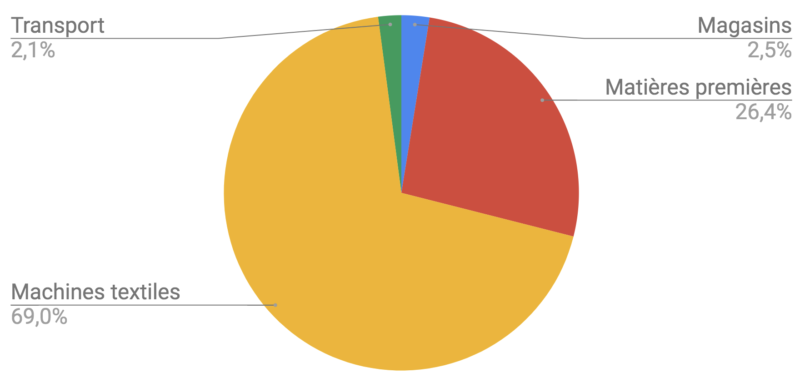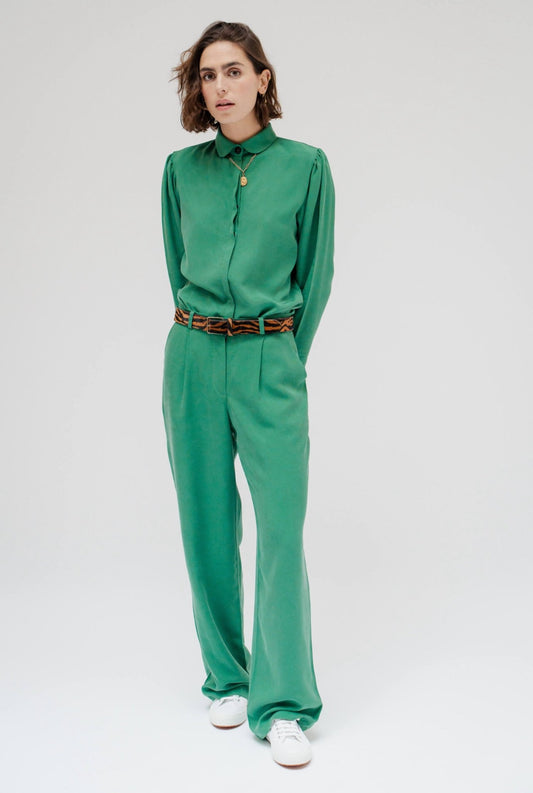
WHERE DO OUR CLOTHES COME FROM?
Share
UNDER THE LABEL: "MADE IN"
Just 10 years ago, remember, the Rana Plaza collapsed causing thousands of deaths and injuries. This building housed several clothing workshops working for international clothing brands (Mango, Primark, etc.) and was the source of an awareness of the social conditions in which our clothes are made. 10 years later, has fashion become responsible?After the tragedy...

A commemoration of the drama in Dhaka on April 24, 2021 - Shutterstock
The results in Bangladesh are not idyllic even if we observe progress. An agreement made it possible to close 200 dilapidated workshops and secure half of the factories following audits financed by these same multinationals. This progress is however denounced by the NGOs present on the spot who have revealed shortcomings and arrangements in these controls. The Rana Plaza is not the only drama in the area. Other events have splashed the universe of the textile industry, disorienting us on the production sites to be privileged. Here are some things to reorient yourself.Made in Europe
To start, here is a study by the International Trade Union Confederation which establishes a ranking categorizing countries according to the risks associated with the violation of workers' rights, category 1 being the least risky and category 5+ the most risky. The result is clear: Europe is the continent with the most security in terms of labor law, obtaining an average score of 2.51, while Asia-Pacific obtains a score of 4.17. So here is a first answer, to buy clothes that respect men, it is best to turn primarily to European production . However, be careful not to be fooled by the sometimes misleading and abusive mentions "Made in...".

Made in France
The mention "made in France" does not guarantee that the entire garment is made in France. Brands play on words. “Made in France” is not a label, it is self-declaration. The product sold originates from the country where it underwent its last major transformation. It is therefore not a guarantee that all stages of production took place in France. The term “made in France” can therefore be misleading. To avoid doubts, it is preferable to trust the label "Guaranteed French origin". This label controlled by an independent body confirms that all the essential characteristics of the garment are made in France (between 50% and 100% of the French unit price) and which ensures a certain traceability.“Made in France” is also an underside that is not always glamorous and in line with legislation. In the Paris region and even in the heart of Paris, there are many clandestine clothing workshops which do not declare their employees and which work in conditions bordering on cleanliness. It is at this price that they manage, unfortunately, to limit production costs because obviously the "made in France", made in good conditions, is expensive. When I first looked for a studio, I first turned to France. I had found great manufacturers but charging far too high prices. So I had to find an alternative and the Portuguese solution appeared. But why do many brands also manufacture their clothes in Portugal?
Made in Portugal
Beyond the financial aspect, Portugal has many advantages in the field of the textile industry. Still according to this same study by the International Trade Union Confederation , we learn that Portugal is positioned in category 2 (like France) in opposition to China which is classified in category 5. Portugal is therefore one of the countries offering good working conditions. work (or at least equivalent to those offered in France when they are respected) and acceptable salary conditions. This type of classification does not relieve the brands of ensuring the working conditions at work in their workshops, work that I undertook with Madelena in charge of the production of our clothes, in Portugal.
Beyond the social conditions practiced, this plebiscite of Portugal is also explained by environmental advantages. Portugal is relatively close to us. It's not very close to us but it's not at the other end of the world, either. So in terms of transport, we avoid a good amount of CO2 released into the atmosphere. This is a good point but it is not the most important since in the manufacture of a garment, transport represents only 2.1% of the environmental impact of a garment. The energy expended by the textile machines represents 69% of the impact of the garment. And insofar as Portugal is one of the good students in terms of renewable energy consumption in Europe ( 7th place vs 14th place for France in 2021 ), this is an excellent point for the environment.

Distribution of emissions from a garment throughout its life cycle (excluding use and end of life), by crossing the Quantis and McKinsey studies, by LOOM.
Finally, Portugal is also distinguished by its textile know-how. Unlike France, Portugal has kept its industrial tool and its workforce to produce quality clothing.
Conclusion: fashion takes responsibility and to be part of this movement, it is preferable to buy clothes produced in Europe, a continent in which labor rights are respected. And within Europe, we must always remain vigilant and question the places of production. You can consult all the service providers I work with here and I will be happy to answer your questions on the subject.
Kisses.
Chloe




